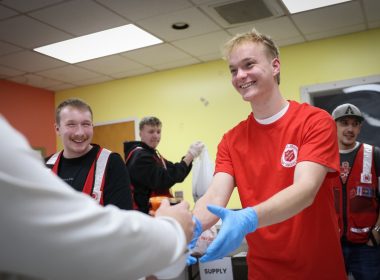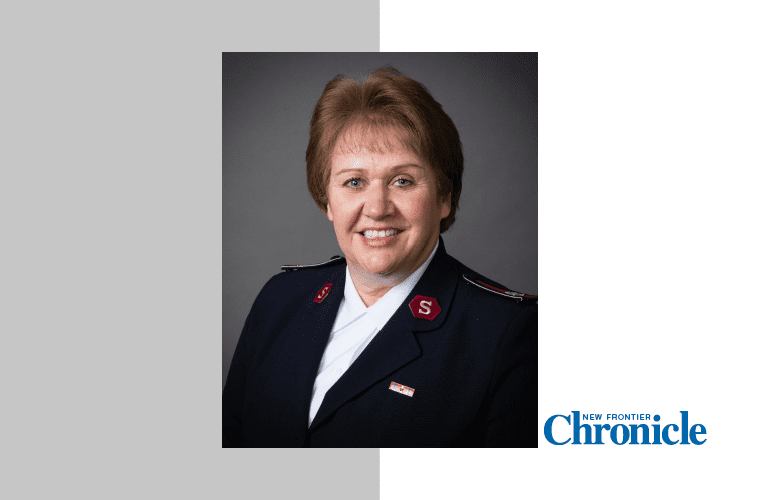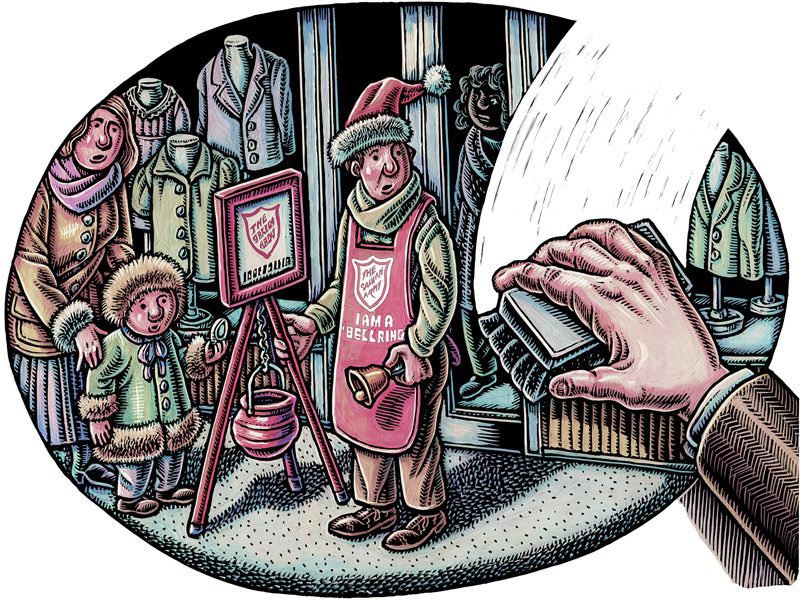Musings on music and traditio
by Robert Docter, Editor-In-Chief –
It’s the day after Thanksgiving, the heaviest shopping day of the season, and the bands and bells of the Army flood the streets of America to announce the arrival of the Christmas season—the advent of the birth of a savior.
For the millions of passers by the sounds awaken nostalgia, altruism, and, possibly, even a little guilt. The Army calls those who pass to face a reality that there are those within their community who struggle even to exist; that even providing food and shelter for their families is difficult; and that it’s painful to cope with the realization that none of the flashy toys in glitzy television spots will find their way beneath their tree. The bells and brass also remind them that The Salvation Army is more than white trucks and disaster relief.
We strive to model the essence of Christian love. It’s traditional.
The bandmaster at my corps on Sunday announced that a new carol book had arrived and that it contained 173 entries. I didn’t know there were 173 songs germane to Christmas, but while pondering that crucial matter I hypothesized that there are probably many more than that. I suspect that the new book has the “traditional” carols as well as a collection of contemporary Christmas songs.
I love Christmas music until about December 15. I’m not dug in on a limitation of the music of Christmas even in the church. Some people are. They think all church music should be limited to worshiping God or instructing the participants on matters of religious belief, and when we get away from that we are irreligious.
Our songbook certainly meets these criteria. In fact, I believe the repetitious nature of spiritual themes helps stamp a belief system firmly within us. It’s organized around ten such themes that fit the doctrinal stance of the Army. Some of them are so “happy” and rhythmic that on occasion we lose control and begin clapping our hands and shouting “Amen” or other comparable exclamations.
Music has a way of connecting feeling and thinking within the brain. It can impact us forcefully. It soothes, it teaches, it inspires, it blesses, it connects us, it reminds us what we are, it can entertain, excite, reach out—and a number of other gifts.
Also, in the Army we have many songs we sing and pieces we play that some would classify sinfully secular. Some see “no inherent spiritual value” in any musical instrument—including the piano. How about bands? What about the banjo or guitar in gospel music? How about an electric organ instead of a pipe organ? They worry a great deal about church soloists who receive applause and respect the audience enough to appreciate the response.
Some of the more orthodox churches don’t allow any music during a service.
Just a century ago, the traditional carols were contemporary. Before that, I suppose we had some hymns, and before that it was limited to some kind of melodic chant—the composer of which must have been roundly criticized by his bishop for moving away from tradition while including some harmony.
With a Salvation Army band, we depart considerably from ancient tradition. One of the most popular carols around a kettle is “Frosty the Snowman” followed closely by “White Christmas.”
These are secular—but still traditional. They are not “religious” or “worshipful.” Their use depends on the purpose for which they are presented. Many of the carols are very religious and describe the Luke version of the birth of Christ or Matthew’s account of the three kings who followed a star from maybe Persia to Bethlehem. They tell the Christmas story. In church I like to feel lifted by the music—to feel better or challenged.
Just what is tradition?
Tradition is the common acceptance and widespread practice of particular customs. Customs develop over time as behavioral representations of cultural values. Papa picked out the husbands for his daughters in Fiddler on the Roof. Many fathers would like that tradition to continue, but in modern American life it’s barely ceremonial. I’m not one who embraces that tradition, but I was pleased that my daughters introduced their intended to me prior to the wedding. I think it’s a wonderful tradition for the betrothed to meet the father of the woman he hopes to marry.
Most of the time, we would have some difficulty even identifying our customs and probably would fail completely in identifying our values.
Because the Army is almost a century and half old, we have many traditions. Many are the outgrowth of customs originating during the early years of the Army. They seemed to work in building a congregation, in communicating a pleasant and helpful worship for a very diverse congregation, and in releasing uniform wearers from the challenge of having a Sunday wardrobe. This tradition also gave us bands—brass instruments—loud enough to attract attention on the street corner or on the march—able to take the place of the pipe organ as we sing the songs of salvation that other churches seem to call hymns.









